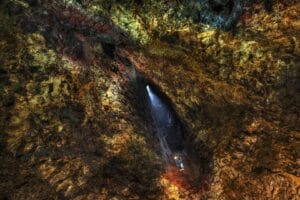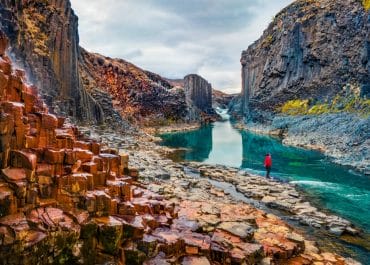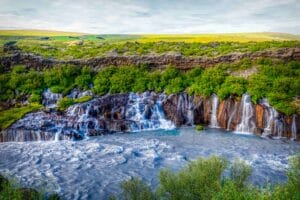
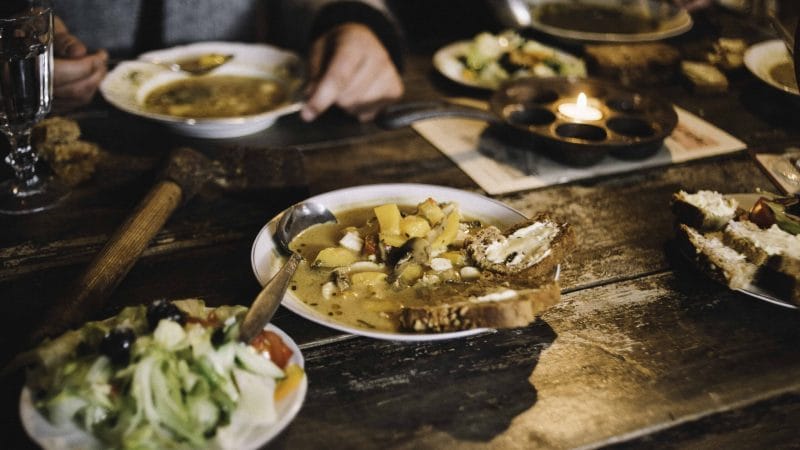

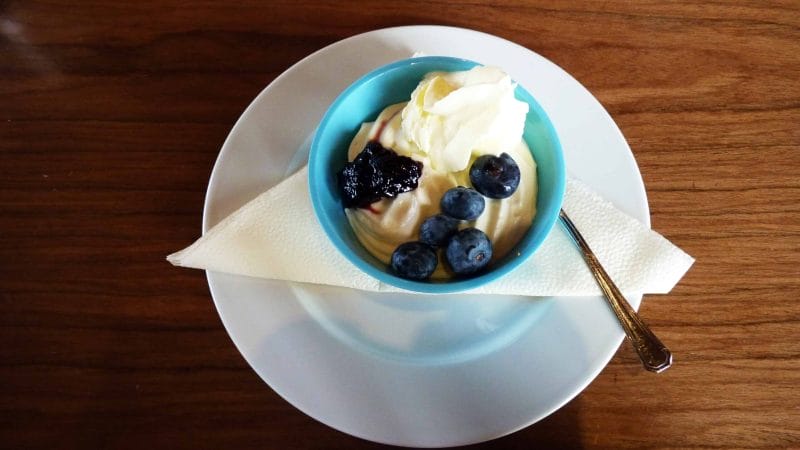

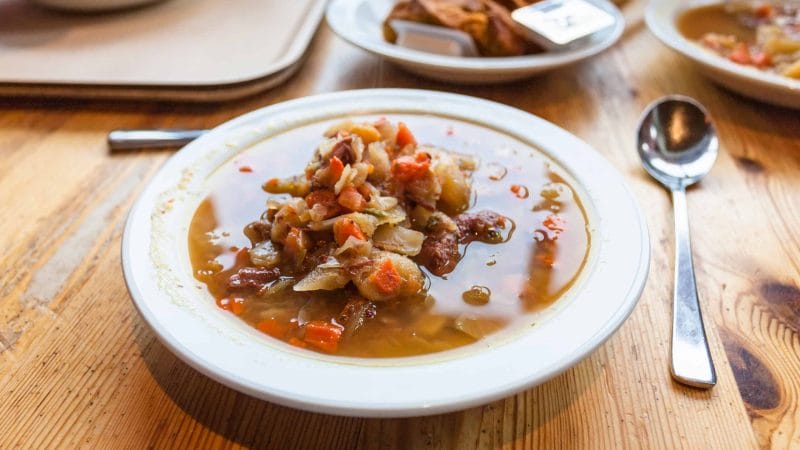

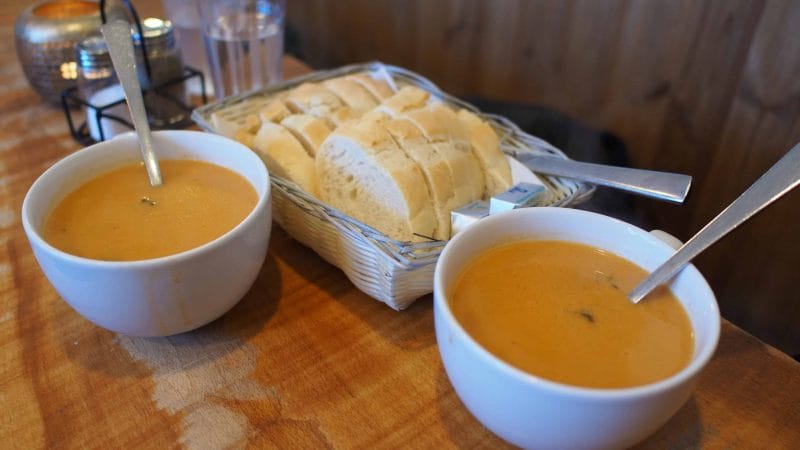
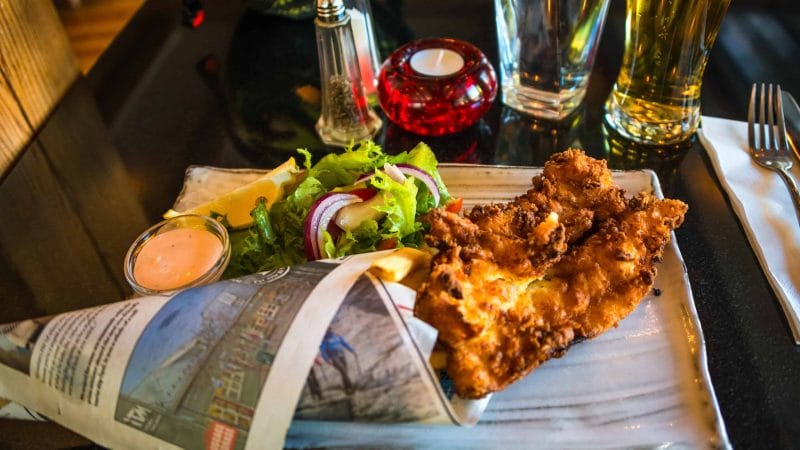



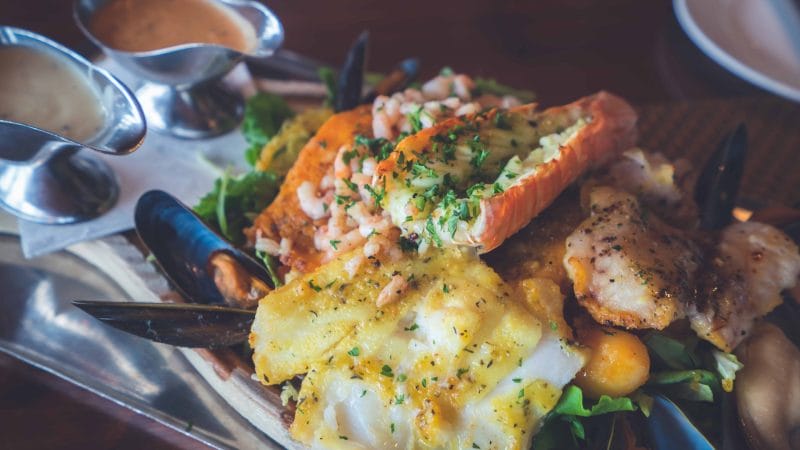


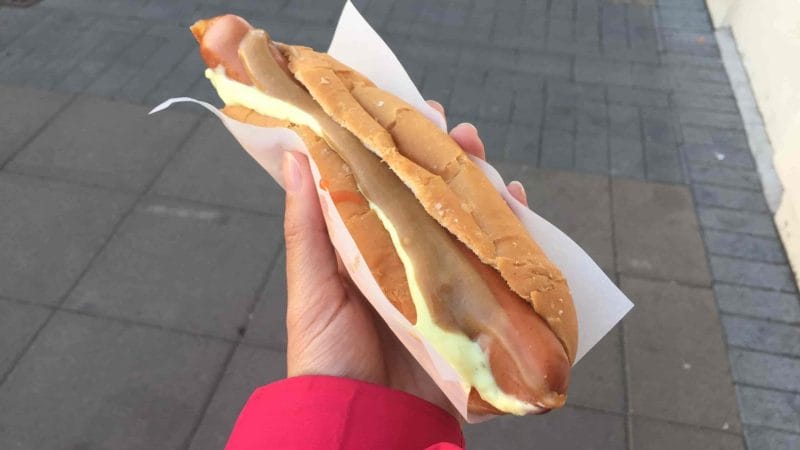
When traveling to a new country, there is an infinite number of new things that one can try and explore. From landscapes, landmarks, monuments, and natural sites, to local traditions, rituals, festivals, events, and activities. The options are numerous when it comes to visiting a place like Iceland which is all about tourism. One can always find a ton of things that they would personally prefer or enjoy. However, there are a few things that one must experience when in a foreign country like in Iceland, the traditional monuments, the key activities, visiting the local, lesser-known attractions, and the traditional food.

Icelandic Cuisine
Icelandic cuisine is as unique as they come. It would be fair to say that the exceptional dishes of the country match the exceptional landscapes that you find here. What makes Icelandic delicacies even more special is the fact that there had been a long-running scarcity of ingredients and resources on the island in the initial phases of the settlement. Icelanders maintained a very simple diet for a very long time given the lack of natural availability of the ingredients, the limited hunting options, and the rarity of importing goods since Iceland is a stranded island in the Arctic Circle.
The development of the fishing industry later in the days along with the technological advancement that brought in the use of geothermal and hydropower flourished the traditional cuisine which majorly consists of seafood. So, in short, Iceland has developed a fantastic cuisine with several delicious dishes made with all local ingredients which make it one of the rarest of traditional cuisine. Let us find out more about the unique dishes that you would find in Iceland on your travels.
Staples – Icelandic Seafood and Fish Dishes
Since grains and other ingredients were hard to come by in Iceland since the land itself couldn’t grow much since the weather is harsh and imports were in top shape, fish gained the place of the staple food. Denmark is the closest country to establish an import system which was way too expensive for Icelanders in the olden days of settlement. All these factors made fish dishes a hit among Icelanders and now the cuisine has a life of its own. Fish dishes used to be a part of at least one meal every day for most people around the 1950s and 60s including a few appearances in breakfast menus. Now fish dishes make an appearance twice or thrice a week which can be translated to ‘quite regular’.

Most Popular Fish Dishes in Iceland
Harðfiskur or Stockfish/Fish Jerky
Also known as jerky, Harðfiskur is generally available at most of the confectionery stores and general stores. It is safe to say that you can find Harðfiskur in almost every household. Apart from general grocery, you can also find this jerky in the Kolaportið flea market. Depending on how you like it, you can eat Harðfiskur straight out of the bag or with a butter spread.
The lack or shortage of grains in Iceland made things like bread a luxury. This meant that people would not eat bread with their meals in general like it is done in most places. Dried fish or Harðfiskur took the place of bread in everyday meals and became quite an important staple food; however, the popularity of dried stockfish has decreased quite a bit in these modern times but dried stockfish is still a prime example of popular dishes in the country.
The traditional way of drying monkfish was to hang them near the beach where the salty air from the ocean carried by strong winds can penetrate the fish and add some beachy flavors to the mix. But the conventional methods of drying monkfish take almost one week but the new, technologically advanced methods take only about 2 days to reach the feat. Generally, fishes like cod and monk fishes along with haddock and wolffish are used to make jerky in Iceland. While dried fish is generally eaten as a snack, it is also used as a garnish or the main ingredient in fish stew.
Plokkfiskur – Fish Stew
Made with the white fish mix, potatoes, onions, milk, flour, seasoning, and many other possible ingredients, Plokkfiskur or fish stew is another popular fish dish of Iceland. While this used to be a way to preserve leftovers for Icelanders initially but it has served as quite a popular dish among tourists. Apart from fish, potatoes play a very important role in the making of stew. They appear in several different shapes and forms including completely mashed, with lumps, and sometimes whole boiled.
Plokkfiskur is usually made with cod, haddock, or halibut combined with the aforementioned ingredients. The literal translation of the Icelandic word is plucked fish and is often served with a side of the infamous Rye Bread of Iceland. There have many variations in the recipe over time and now people even like to include ingredients like chives, bearnaise sauce, curry, and cheese in the mix.
Humar – Icelandic Lobster/Langoustine
Lobster in itself is a luxury or gourmet item no matter where you are from and Iceland has its different version of it. Leturhumar or langoustine (also known as Humar) is the signature lobster for the Icelandic lobster dish. It is a smaller version of the American lobster that is generally found in the North Atlantic Ocean or the Mediterranean Sea. The westernmost part of the ocean and the sea range fall right beside the southern part of Iceland which makes it a very common seafood item in the country. This lobster dish can be found prepared in several different ways such as baked, grilled, fried, or, the best of all, topped on pizza. Imagine having a pizza which has a topping of a lobster, sounds pretty gourmet, right?
Hákarl – Fermented Shark
Made with Greenland shark and other species of sleeper shark meat, the fermented shark is another fish delicacy to look forward to when in Iceland. While fermented shark meat is a very popular dish among Icelanders, tourists often find it less appealing in comparison to other delicacies because of the high ammonia content of the dish. While the taste of the fish is one thing, the smell is even stronger which makes it unbearable for many people out there. But for Iceland, the fermented shark is an undeniable part of the þorramatur – a collection of fish dishes served at a midwinter festival celebrated in the country. Many locals like to eat this dish with a shot of local spirit which may make it easy to keep it down.
Since this fermented shark dish is generally prepared using the Greenland shark, it is made sure that the gutted meat is properly prepped to remove the poisonous toxins from the meat. The traditional method of fermentation involved gutting the meat and then placing it underground for about 3-4 months and then suspending it mid-air to dry out for another 3-4 months. The newer and more modern methods just require the meat to be cut and put into a box with many holes for about 6-9 weeks and then hung up mid-air for about 3-4 months for drying. Needless to say, the process of fermenting shark is quite long.
Icelandic Bread Dishes
Fun fact, Iceland didn’t get its first official baker until the 19th century, sounds crazy, right? The lack of grain in a cold, deserted island like Iceland is not a surprise but the way Icelanders has made the best out of what was available to them is truly surprising. Grains to make edibles like bread were never something that Icelandic soil could grow in its entirety so most of the grains that are available in the country are imported from Denmark. There are some places where locals (even Viking settlers) tried to grow barley but the results were not too good.
This made grains and things made with grains a delicacy, or even a luxury, in Iceland. Making bread initially was a decision taken to make whatever available quantities of grains last for as long as possible by grinding them but later it became a food item loved by many. The fact that grain has to be imported made it very expensive and hence only available for the extremely rich.
Bread specialties in Iceland include Leaf Bread or Laufabrauð which is baked during the holiday season around Christmas, Rye Bread, or rúgbrauð which is a very popular side dish for many gourmet dishes in Iceland, and traditional Icelandic Flat Bread or Flatkaka. There are several modern baked dishes that you would find now in Iceland such as Snúður –cinnamon filled bread which is dipped in chocolate or caramel, Pönnukökur or also known as Icelandic pancakes, Rúgbrauðsís – rye bread served with ice cream famously found in Kaffi Loki café in the capital city of Reykjavík.

Lamb Dishes in Iceland
Just like fish, sheep also has been one of the most important and staple food of Iceland from the earliest of times. Sheep was more like a livelihood of Icelander since the wool kept them warm in the unbearable cold weather and the meat was a good source of food in barren land that rarely grew anything. Viking settlers brought their sheep with them which they were brought up and bred in isolation on the island, just like the Icelandic horses, and hence got the name ‘settlement breed’.
As the climate of Iceland does not really allow proper growth of grains, sheep and other farm animals survive on food sources like berries, grass, and seaweed. Sheep are let out of their barns in summers and allowed to roam freely in the wilderness and graze. This makes the meat of lamb quite tender and has a mild flavor.
A preserved dish, smoked lamb is something that you have to taste when it comes to the most recommended dishes of the land of ice and fire. Smoking is not only a popular way to preserve food but also introduces a very distinct flavor to the meat. The smoked meat in Iceland is prepared using the popular method of hanging meat also known as Hangikjöt or ‘hung-meat’. The smoking is done via two methods – ‘birkireykt’ and ‘taðreykt’. Birkireykt is done using birch wood while taðreykt is performed by smoking the meat on sheep dung mixed with hay. These methods are pretty popular for smoked salmon, sausages, and other meat as well. As far as smoked lamb is concerned, it is a traditional served on Christmas as a signature dish along with side dishes like leaf bread, potatoes prepared in béchamel sauce, red cabbage, and green peas.
Best Known Smoked Lamb Dishes
- Hangikjöt Sandwiches: The hung-meat or Hangikjöt sandwiches are a popular lunch item in Iceland and are often made with flatkaka bread.
- Meat Soup or Kjötsúpa: Ideal to be served in winters, this warm hearty dish contains the tougher parts of lamb meat and a variety of vegetables often served with side dishes.
- Hot Dog or Pylsa: Icelandic hot dog has a reputation of its own and is often listed as one of the top recommended dishes to try in the country. The hotdogs in Iceland are made by blending lamb, beef, and pork. The best way to enjoy these hot dogs to the fullest is by getting them with toppings of deep-fried onions or raw onions, creamy remoulade sauce, ketchup, and mustard.
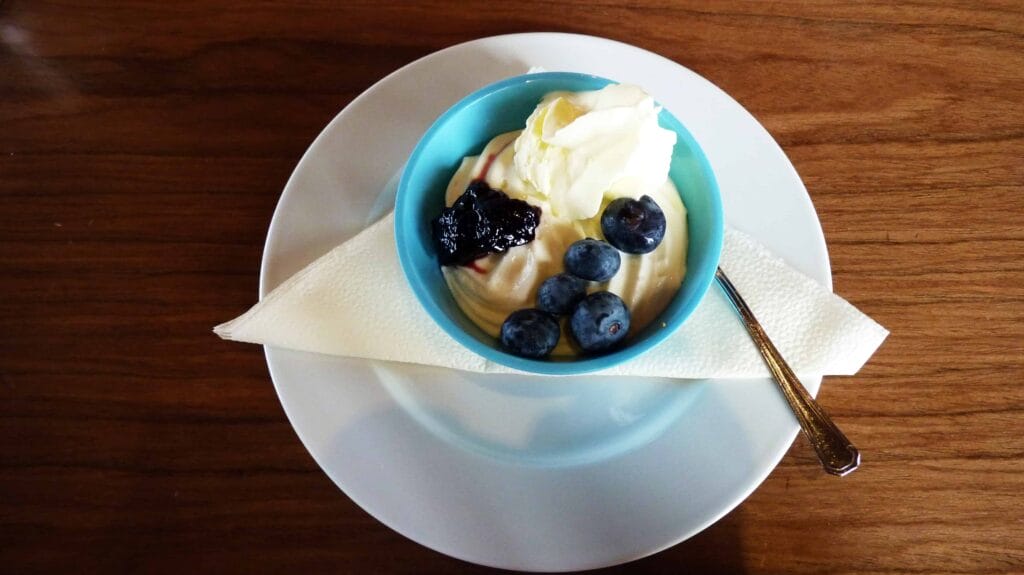
Skyr or Icelandic Yogurt
To comprehend the importance of the Skyr, you can simply visit the National Museum of Iceland. There you will find jars filled with something grey and solid matter which actually is the leftover Skyr from the era of Vikings. Skyr is essentially a dairy product of Iceland that is generally conceived as yogurt but is classified into the category of cheese. Skyr was a Viking dish, to begin with, but has evolved since then.
Skyr is made with skim milk. First, the milk is separated from the cream and then the remaining milk is pasteurized. The last step is to add live culture from the previously made batches of Skyr. The process is almost the same as the one followed to make the curd. The thickened batch of the milk cultured before is then filtered and the water content is separated. Flavors are added to the resulting product like vanilla, mango, coconut, and even licorice. Skyr is popularly eaten at any time of the day as both snacks and meals.
Some Controversial Icelandic Delicacies
Most of the dishes in Iceland originated from the existence of necessity rather than the desire to create something gourmet, so, there is a huge chance that you will find a few dishes that are not only unusual but also controversial. The lack of grain and vegetation made it a rule to include animals in the meals as a primary part and the initial poverty-laden state of the settlers made it impossible for them to waste any part of the animals. This is why you will see some of the most unique and eccentric animal parts on the menu, for example, ram’s testicles, sheep heads, and shark meat.
Slátur is one such dish which is quite unusual. It is prepared using sheep’s blood or liver and kidneys, oatmeal, minced fat, rye, and spice. It is served with mashed or boiled potatoes, mashed turnips, rice pudding with cinnamon.
Boiled Sheep Head or Svið is another thing you would find somewhat weird and it is certainly quite a controversial one in the country. The sheep’s head is prepared in its entirety and it is a popular opinion that it does not taste as bad or weird as it looks. However, it may seem a bit off when you find Icelanders eating parts like even tongue and eyes. And, last but not the least, Hrútspungar aka ram’s testicles. Pickled, boiled, and cured in whey, this dish is another popular item on the menu in traditional Icelandic restaurants.

Controversial Ingredients in Iceland
When it comes to controversial ingredients, the ones that top the list are whale meat, puffin meat, and horse meat. Note that Icelandic horses are purebred and are never let off the island in any situation which makes them quite an important part of the nation’s identity. Noting the same, commercial selling and preparing of horse meat were banned when Christianity took over as the main religion of the country in 1000 AD. The ban was then once lifted in the 18th century and the craze lasted till the mid-19th century after that but was soon disregarded by the locals. People, nowadays, do eat horse meat but it is considered a sign of poverty in the country.
Iceland is the breeding ground for about 20% of the total puffin population on the planet which makes it the home to about 10 million puffins. Otherwise protected birds, puffins are allowed to be hunted in Iceland along with a few other places. However, some restrictions have been placed recently to regulate the declining population of the spices which was caused due to a few failed breeding seasons in the mix. So, puffin hinting is now strictly regulated in Iceland but still allowed. You are sure to find broiled or smoked puffin meat on the menu in several restaurants in Iceland.
Whale meat is by far the most controversial meat and an ingredient in Icelandic cuisine. Whaling used to be a very well-flourished industry in Iceland at a point and the commercialization of the activity officially happened in the 19th century. Several bans and regulations have been put on whaling over the years concerning commercial and personal use of whale meat. Currently, whaling is not completely banned but is strictly regulated in the country. Fin whales and mink whales are the two spices that are caught in Iceland. While mink whale is made available in local restaurants and grocery stores, the fin whale is sold and exported to Japan. The good news is that there have been quite a few years since minks were caught and seem that people have come to terms with ending whaling on an honor basis if not for the law. Whale meat is rarely ever used for domestic use and is mostly sold to restaurants.
Traditional Sweets
The most favorite sweet treats in Iceland are ice cream and licorice. So, if you were thinking that you won’t be able to fulfill your fantasy of eating ice cream in Icelandic cold then don’t be disappointed. There are several ice cream parlors in every town and settlement across the country. Soft serve ice cream topped with several different kinds of toppings is the most popular one in the country. You can try out different flavors and mix-match some unique tastes to ideally enjoy yourself.
Licorice in Iceland comes in all kinds of flavors from the very basic ones like chocolate-covered to powered raisins, salt, and almonds. Some great options to look out for are Draumur and Þristur – chocolate covered licorice, Opals, Appolo Stjörnurúlla – marzipan and licorice roll, and Lakkrísrör – a cool licorice straw to drink cold drinks. And to top the list, do not forget the licorice ice cream!


